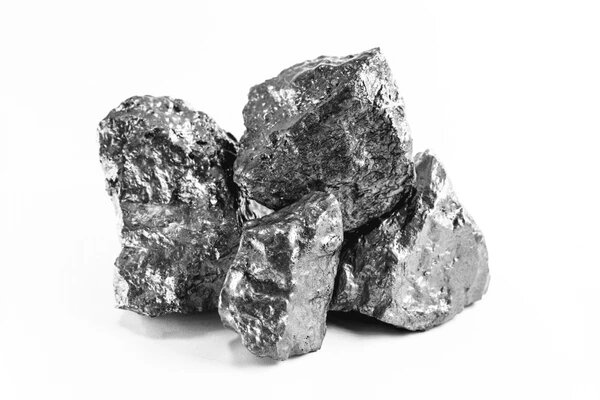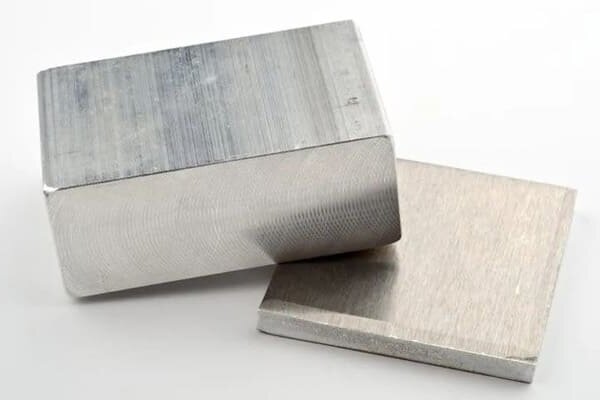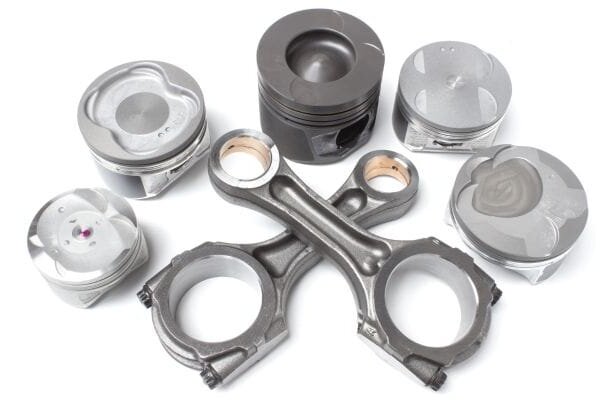الألومنيوم موجود في كل مكان، من الهواتف الذكية إلى ناطحات السحاب. غالبًا ما يغفل الناس عن مدى تأثير كثافته على تصميم المنتجات وتكاليف الشحن وحتى استخدام الطاقة. عندما تتطلب المشاريع مواد خفيفة الوزن لكنها قوية، فإن معرفة قيم الكثافة المثلى يمكن أن تكون الفرق بين النجاح وإهدار الموارد.
قد تبدو كثافة الألومنيوم بسيطة، ولكنها تؤثر على كل خطوة تقريبًا، بدءًا من التخطيط وحتى التسليم. ابق هنا لتتعرف على ما تعنيه الكثافة لمشروعك القادم من الألومنيوم.

ما هي الكثافة؟
الكثافة هي مقدار الكتلة في حجم معين. وهي توضح مدى إحكام تعبئة الذرات في مادة ما. وبعبارات بسيطة، تخبرك الكثافة بمدى ثقل الشيء بالنسبة لحجمه.
يتميز الألومنيوم بكثافة منخفضة. وهذا يعني أنه أخف وزنًا مقارنةً بالمعادن الأخرى، مثل الفولاذ أو النحاس. وهذا هو السبب في استخدامه في التطبيقات التي يكون فيها الوزن مهمًا، مثل صناعة الطيران والسيارات والتغليف.
وحدات قياس الكثافة
تُقاس الكثافة عادةً بالجرام لكل سنتيمتر مكعب (g/cm³) أو بالكيلوجرام لكل متر مكعب (kg/m³). وفي الولايات المتحدة الأمريكية، يتم التعبير عنها عادةً بالرطل لكل بوصة مكعبة (رطل/بوصة مكعبة).
للألومنيوم:
- 2.7 جم/سم مكعب
- 2,700 كجم/م³
- 0.0975 رطل/بوصة³

فهم كثافة الألومنيوم
يتميز الألومنيوم بوزنه الخفيف وقوته الجيدة. وتُعد كثافته من أول الأشياء التي يأخذها المهندسون في الاعتبار عند اختيار مادة للتصميمات خفيفة الوزن.
قيمة الكثافة الدقيقة للألومنيوم
تبلغ كثافة الألومنيوم النقي 2.7 جرام لكل سنتيمتر مكعب. وتبقى هذه القيمة نفسها تقريباً في جميع الدرجات الشائعة، ما لم تغيرها السبائك أو الظروف القاسية. يخبرك هذا الرقم كم يزن السنتيمتر المكعب الواحد من الألومنيوم.
المقارنة مع المعادن الأخرى
لمعرفة سبب تميز الألومنيوم، قارنه بهذه المعادن:
- فُولاَذ: ~حوالي 7.85 جم/سم مكعب
- نحاس: ~حوالي 8.96 جم/سم مكعب
- التيتانيوم: ~حوالي 4.51 جم/سم مكعب
- المغنيسيوم: ~حوالي 1.74 جم/سم مكعب
الألومنيوم أخف بكثير من الفولاذ أو النحاس ولكنه أثقل من المغنيسيوم. فهو يحقق توازناً جيداً بين القوة والوزن.
العوامل المؤثرة على كثافة الألومنيوم
يمكن لعناصر السبائك أن تغير كثافة الألومنيوم بشكل طفيف. قد تؤدي إضافة عناصر مثل السيليكون أو المغنيسيوم أو الزنك إلى زيادة وزنه. كما يمكن أن تؤدي طرق المعالجة مثل الصب أو التشكيل إلى تغييرات طفيفة. لكن هذه التغييرات عادة ما تكون طفيفة.
كيف تُقاس الكثافة؟
لاستخدام الألومنيوم بشكل صحيح في التصميم، تحتاج إلى قيم كثافة دقيقة. يقيس المهندسون الكثافة في المختبرات أو باستخدام الطرق الميدانية للتحقق من المواصفات وتقييم جودة المواد.
التقنيات المختبرية لقياس الكثافة
في المختبرات، غالبًا ما تُقاس الكثافة باستخدام مبدأ أرخميدس. تُوزن العينة المعدنية في الهواء، ثم في الماء. ويساعد الفرق في حساب الحجم، وهو ما يعطيك الكثافة. هناك طريقة أخرى وهي استخدام الأشعة السينية أو الماسحات الضوئية الليزرية للحصول على قراءات أكثر دقة للحجم.
الطرق العملية لتحديد كثافة الألومنيوم
في الإنتاج أو العمل الميداني، تتمثل إحدى الطرق السريعة في استخدام عينة معروفة الحجم. قياس وزنها وقسمة وزنها على حجمها. تعمل هذه الطريقة التقريبية عندما لا تكون هناك حاجة إلى دقة عالية. إنها طريقة سريعة للتحقق مرة أخرى من مواصفات المواد.
ما أهمية كثافة الألومنيوم؟
إن كثافة الألومنيوم المنخفضة تجعله خيارًا مفضلاً للعديد من الصناعات. فهو يساعد على خفض الوزن وتقليل التكاليف وتحسين تصميم المنتج.
التأثير على التطبيقات الصناعية
تؤثر كثافة الألومنيوم تأثيرًا مباشرًا على أداء المنتجات، خاصةً عندما يكون الوزن عاملًا مهمًا. غالبًا ما تؤدي المواد الأخف وزنًا إلى إنتاج أسرع وتكاليف شحن أقل ومناولة أسهل.
صناعة الطيران والسيارات
في مجال الطيران، يُترجم الوزن المنخفض إلى تحسين كفاءة استهلاك الوقود وزيادة سعة الحمولة. كل جرام يتم توفيره في تصميم الطائرات مهم. ولهذا السبب يُستخدم الألومنيوم في أجسام الطائرات والأجنحة والهياكل الداعمة.
في صناعة السيارات، يستخدم صانعو السيارات الألومنيوم لتلبية لوائح الاقتصاد في استهلاك الوقود وتحسين الأداء. ألواح هيكل خفيفة الوزن, الإطارات، وتساعد أجزاء المحرك على تقليل استهلاك الوقود وزيادة السرعة.
البناء والتغليف
في المباني، يسمح الألومنيوم للمباني بأن تظل الهياكل خفيفة مع الحفاظ على قوتها. فهو يُستخدم في إطارات النوافذ والكسوة وألواح الأسقف. كما أنه أسهل في النقل والتركيب من المواد الثقيلة.
بالنسبة للتغليف، مثل علب المشروبات والرقائق، فإن الكثافة المنخفضة تجعل الألومنيوم خيارًا مثاليًا. فهو سهل التشكيل، وخفيف في الشحن، وسهل إعادة التدوير.
الكثافة مقابل القوة: ميزة الألومنيوم
الألومنيوم خفيف، ولكن هذا لا يعني أنه ضعيف. فهو يحافظ على قوة صلبة مع تقليل الوزن، مما يمنحه ميزة تصميمية كبيرة.
الخصائص خفيفة الوزن والسلامة الهيكلية
توفر العديد من سبائك الألومنيوم مزيجًا جيدًا من الكثافة المنخفضة والقوة العالية. على سبيل المثال، يتم استخدام 6061-T6 في الأجزاء التي تتطلب دعماً قوياً ولكن يجب أن تظل خفيفة الوزن. يساعد هذا التوازن في بناء منتجات آمنة وفعالة.
المفاضلة بين الكثافة والأداء
قد يعني انخفاض الكثافة انخفاض الصلابة مقارنةً بالفولاذ. لذلك، قد تحتاج إلى أجزاء أكثر سمكاً للحفاظ على نفس القوة. ولكن الوزن الإجمالي غالباً ما يبقى أقل.

المبادئ العلمية وراء كثافة الألومنيوم
تأتي كثافة الألومنيوم من تركيبته الداخلية. وتلعب تركيبته الذرية وكيفية تفاعله مع الحرارة دورًا حاسمًا في تحديد سلوكه في التطبيقات الواقعية.
التركيب الذري والكثافة
وتعتمد كثافة أي مادة على كتلة ذراتها ومدى إحكام تعبئتها. ذرات الألومنيوم خفيفة نسبيًّا ومرتبة في نمط معين.
كيف يؤثر الترتيب الذري للألومنيوم على الكثافة?
يحتوي الألومنيوم على بنية بلورية مكعبة متمركزة الوجه (FCC). هذا الترتيب مضغوط ولكن ليس بكثافة المعادن الأخرى، مثل الحديد. الوزن الذري للألومنيوم منخفض، مما يزيد من خفة وزنه.
كما يمنحه هيكله FCC قابلية تشكيل وقوة جيدة، حتى مع انخفاض كتلته. ولهذا السبب يمكن أن يكون الألومنيوم عازمة, مختومة، أو ممتد دون أن تنكسر.
دور السبائك في تعديل الكثافة
عندما يُدمج الألومنيوم مع عناصر أخرى، مثل السيليكون أو النحاس أو المغنيسيوم، فإنه يشكل سبيكة. يمكن أن تكون هذه الذرات المضافة أثقل أو أخف وزنًا من الألومنيوم، وهو ما يغير الكثافة قليلًا.
على سبيل المثال:
- قد تكون سبائك الألومنيوم والنحاس أكثر كثافة.
- قد يكون لسبائك الألومنيوم والمغنيسيوم كثافة مماثلة لكثافة الألومنيوم النقي.
ولكن معظم التغييرات في السبائك تكون طفيفة، وعادةً ما تكون في حدود نسبة قليلة. ويكون التغيير الأكثر أهمية في القوة أو مقاومة التآكل، وليس في الوزن.
العلاقة بين درجة الحرارة والكثافة
كلما ارتفعت درجة الحرارة، يتمدد الألومنيوم. يزداد الحجم بينما تظل الكتلة كما هي، وهو ما يقلل من الكثافة.
تأثيرات الحرارة على كثافة الألومنيوم
عند التسخين، تتحرك ذرات الألومنيوم بعيدًا عن بعضها البعض. وهذا يسبب التمدد الحراري. ومع زيادة المسافة بين الذرات، تصبح المادة أقل كثافة.
هذا التأثير قابل للعكس. عند تبريده، يعود الألومنيوم إلى كثافته وحجمه الأصليين. ومع ذلك، في حالة الحرارة الشديدة، قد تحدث تغيرات دائمة مثل الالتواء.
الآثار الواقعية للتمدد الحراري في العالم الحقيقي
في مجال الطيران أو الإلكترونيات، يجب على المصممين مراعاة تأثيرات التغيرات الحرارية. يمكن للأجزاء المعرضة للحرارة أن تتمدد، مما يسبب الإجهاد أو اختلال المحاذاة. تساعد معرفة كيفية تفاعل كثافة الألومنيوم على تجنب فشل التصميم.
مقارنة كثافة الألومنيوم عبر السبائك
لا تتمتع جميع درجات الألومنيوم بالكثافة نفسها. فكل سبيكة تخضع لتغييرات طفيفة بناءً على العناصر المضافة إليها. يمكن أن تساعدك هذه التغييرات في اختيار المادة المناسبة لمشروعك.
سبائك الألومنيوم الشائعة وكثافتها
تقع معظم سبائك الألومنيوم الشائعة ضمن نطاق ضيق من الكثافات. فيما يلي بعض الأمثلة:
مقارنة كثافة سبائك الألومنيوم
- سلسلة 1000 (ألومنيوم نقي): ~حوالي 2.70 جم/سم مكعب
- 2024 (Al-Cu): ~حوالي 2.78 جم/سم مكعب
- 5052 (Al-Mg): ~حوالي 2.68 جم/سم مكعب
- 6061 (Al-Mg-Si): ~حوالي 2.70 جم/سم مكعب
- 7075 (Al-Zn): ~حوالي 2.81 جم/سم مكعب
حتى مع استخدام السبائك، تظل الكثافة قريبة من كثافة الألومنيوم النقي. تتراوح الفروق عادة من 2.66 إلى 2.83 جم/سم مكعب.
كيف تغير عناصر السبائك الكثافة?
تؤدي إضافة عناصر أثقل، مثل النحاس أو الزنك، إلى زيادة الكثافة. أما العناصر الأخف وزناً، مثل المغنيسيوم أو السيليكون، فتجعله أقرب إلى الألومنيوم النقي. لكن التغيير الرئيسي غالبًا ما يأتي في الخواص الميكانيكية، وليس الوزن فقط.
اختيار السبيكة المناسبة للاحتياجات المحددة
تساعدك معرفة استخدامك على اختيار سبيكة الألومنيوم المناسبة. يلعب كل من الوزن والقوة ومقاومة التآكل والتكلفة دورًا في ذلك.
التطبيقات عالية الكثافة مقابل التطبيقات منخفضة الكثافة
- الاستخدام سبائك عالية الكثافة (مثل 7075) عندما تكون القوة أكثر أهمية من الوزن، كما هو الحال في صناعة الطيران أو الأجزاء ذات الحمولة العالية.
- الاستخدام سبائك منخفضة الكثافة (مثل 5052) عندما تكون الأولوية للوزن الخفيف، كما هو الحال في التغليف أو الهياكل المحمولة.
التوصيات الخاصة بالصناعة
- الفضاء الجوي: 2024 و7075 للقوة والأداء
- السيارات: 6061 لأجزاء الإطار، و5052 للألواح
- البحرية: 5083 لمقاومة التآكل وقابلية التشكيل
- بضائع المستهلكين: 3003 لأدوات الطهي والعلامات والمواد منخفضة الحمولة

الآثار العملية المترتبة على كثافة الألومنيوم
تلعب كثافة الألومنيوم دورًا مهمًا في تخطيط المشاريع. فهو يؤثر على كيفية تصميم الأجزاء، وكيفية شحن المنتجات، وكيفية إعادة استخدام المواد.
حسابات الوزن للمشاريع الهندسية
لتجنب التخمين، يقوم المهندسون عادةً بحساب وزن الألومنيوم قبل الإنتاج. وهذا يساعد في تخطيط التكلفة وسعة التحميل واحتياجات التجميع.
معادلات تقدير وزن الألومنيوم
المعادلة الأساسية للوزن هي:
الوزن = الحجم = الحجم × الكثافة
بالوحدات المترية:
الوزن (كجم) = الحجم (م³) × 2,700 كجم/م³
بالوحدات الإمبراطورية:
الوزن (رطل) = الحجم (بوصة³) × 0.0975 رطل/بوصة³
مثال على ذلك:
يبلغ حجم قضيب ألومنيوم صلب قطره 2 بوصة وطوله 12 بوصة حوالي 37.7 بوصة³. اضرب ذلك في 0.0975 لتحصل على حوالي 3.68 رطل.
دراسات حالة في التصميم والتصنيع
- الشركات المصنعة للسيارات خفض وزن السيارة عن طريق استبدال الأجزاء الفولاذية بالألمنيوم. تعني السيارة الأخف وزناً كفاءة أفضل في استهلاك الوقود وانبعاثات أقل.
- مصممو المعدات استخدام ألواح الألومنيوم لتقليل وزن الإطار دون المساس بالصلابة.
- صانعو الإلكترونيات غالبًا ما تختار العلب المصنوعة من الألومنيوم لتحسين التحكم في الحرارة وسهولة النقل.
تبدأ هذه الخيارات غالبًا بحسابات بسيطة قائمة على الكثافة.
اعتبارات إعادة التدوير والكثافة
يمكن إعادة تدوير الألومنيوم عدة مرات دون أن يفقد قوته أو جودته. وتظل كثافته ثابتة، حتى بعد صهره وإعادة تشكيله.
كيف تؤثر إعادة التدوير على خواص الألومنيوم?
يحافظ الألومنيوم المعاد تدويره على كثافته الأصلية. قد تحدث بعض التغييرات الطفيفة في التركيب، لكنها لا تؤثر بشكل كبير على الوزن. ويتطابق أداء الألومنيوم المعاد تدويره تقريباً مع أداء المواد البكر.
لا تستخدم إعادة التدوير سوى جزء صغير من الطاقة اللازمة لإنتاج الألومنيوم الجديد، مما يساعد على خفض تكاليف الإنتاج والانبعاثات.
فوائد الاستدامة من طبيعة الألومنيوم الخفيفة الوزن
تؤدي المواد الأخف وزنًا إلى انخفاض استهلاك الوقود في الشحن وتقليل استخدام الطاقة في التصنيع. على سبيل المثال، تحتاج الطائرة أو الشاحنة الأخف وزنًا إلى وقود أقل لنقل نفس الحمولة.
خاتمة
تبلغ كثافة الألومنيوم حوالي 2.7 جم/سم مكعب، مما يجعله أخف وزنًا من الفولاذ أو النحاس. هذه الكثافة المنخفضة هي أحد الأسباب الرئيسية لاستخدام الألومنيوم على نطاق واسع في تطبيقات الطيران والسيارات والبناء والتغليف. فهي تساعد على تقليل الوزن دون التخلي عن القوة. تظل الكثافة ثابتة في الغالب، حتى عند تشكيل السبيكة أو إعادة تدويرها.
هل تحتاج إلى مساعدة في اختيار مادة الألومنيوم المناسبة لمشروعك؟ تواصل معنا مع رسوماتك أو مواصفاتك - فريقنا جاهز لمساعدتك من خلال عروض أسعار سريعة ودعم الخبراء والإنتاج الموثوق به.
مهلا، أنا كيفن لي

على مدى السنوات العشر الماضية، كنت منغمسًا في أشكال مختلفة من تصنيع الصفائح المعدنية، وشاركت رؤى رائعة هنا من تجاربي عبر ورش العمل المتنوعة.
ابقى على تواصل

كيفن لي
لدي أكثر من عشر سنوات من الخبرة المهنية في تصنيع الصفائح المعدنية، وتخصصت في القطع بالليزر، والثني، واللحام، وتقنيات معالجة الأسطح. كمدير فني في شنغن، أنا ملتزم بحل تحديات التصنيع المعقدة ودفع الابتكار والجودة في كل مشروع.



